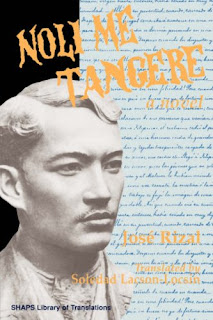Ang “Banaag at Sikat” ni Lope K. Santos
(Halaw sa sulat ni Nueva Mia Vida at Lope Bagtas)
Ang nobelang Banaag at Sikat ay itinuturing na isang muhon sa literaturang Pilipino, dahil ito ang kauna-unahang nobela sa Tagalog na tumalakay sa pag-ibig, pamilya, at sosyo-ekonomyang mga isyu mula sa punto de bista ng isang manunulat na may panlipunang kamalayan.
Ang tagpuan ng kwento ay sa Maynila noong 1906 kung saan makikita ang isang lipunang nasa krisis. Paglaon ng kwento, ang natuklasang bagong ideolohiyang sosyalismo ang gagamot sa mga sakit ng lipunan.
Si Delfin (ang bidang tauhan) ay isang mahirap na peryodista. Yakap niya ang ilang sosyalistang ideya kaugnay ng unyonismo at makauring pakikibaka. Si Felipe naman ay isang anak mayaman, radikal bagamat tipong anarkista. Nakatakdang ikasal si Delfin kay Meni, na anak ng isa sa pinakamayaman sa Maynila. Si Felipe naman ay may gusto sa mahiyaing si Tentay, anak ng isang manggagawa.
Pero magsasalubong ang kanilang mga buhay at mapopokus ang istorya kay Delfin at Meni. Nagkagustuhan ang dalawa. Naging malaking eskandalo ito sa mga mayayaman, laluna nang mabuntis si Meni. Dahil dito'y napahiya nang husto ang kanyang amang si Don Ramon. Inalisan ng pamana si Meni at lumipad si Don Ramon papuntang Amerika. Duon ay napatay siya ni Tikong, isang katulong na may matinding galit sa kanya. Babaligtarin sana ng pamilya ang desisyon ng ama para ibalik ang mana ni Meni pero sa kundisyong iiwan niya ang kanyang asawang si Delfin. Pero tumanggi si Meni. Ipinaglaban nina Meni at Delfin ang kanilang pag-ibig. Nagtapos ang kwento sa madamdaming pagtatalumpati ni Felipe hinggil sa napipintong pagbagsak ng burgesya.
Tunghayan natin ang pag-uusap sa pagitan nina Don Ramon, Delfin at Felipe:
"Nagpapasalamat po ako (ni Delfin), ang malumanay na pasimula na tugon--na magkaroon ng mga katalong gaya ninyo: matatanda, marami nang araw na naranasan, lupang natuntungan at bagay na napagkita. Abot ko rin naman ang aking kakaunti pang nalalaman ay hindi sukat upang sa inyo'y makapagpabagong akala.
Dalawang panahon po tayo: kayo ang kahapon, at kami ang bukas: dito sa ngayon tayo nagkatagpo, kaya ang nakita at nakikita na lamang ang mapagpapatakaran ng mga paghahaka natin, at ang hindi pa nakikita, ay hindi. Ang kahapo'y inyung-inyo, ang ngayo'y inyo pa rin, at kung bagaman may bahagi kami sa ngayon, ay munti lamang marahil. Nguni't inyo na sanang ipagparaya sa mga bata ang paghahanda ng bukas na hindi na inyo kundi amin.
Masasabi nga ninyong ang bayang manggagawa natin ay hindi pa binabagayan ng mga aral ng sosyalismo, dahil sa makaliligalig lamang sa kanila, kung sa bagay ay mga makapupong buti sa kalagayan ng manggagawang Aleman, Pranses, Kastila at iba pa. Ngunit, kailan pa ihahanda ang Pilipino upang may lakas na maisagupa sa nagbabala sa kanyang bagong-panahon ng mga malalaking pagawaan o gran industria? Antayin pa ba naming matatag na muna rito sa Pilipinas ang mga puhunang dayo, matibag na ang mga bunduk-bundok na mina at mapasukan ng mga makina ang lahat ng mga paggawa niyang ikinabubuhay ngayon? Talagang hindi pa nga nalalaman ng manggagawang Pilipino kung ano ang tinatawag na sosyalismo; kaya naman itinuturo namin. Kami'y may mga sadyang papulong na idinaraos at dinadaluhan ng ilang mga manggagawang hirang lamang. Ang katuturan ng sosyalismo ay di namin kinakain, ni ipinakakain nang buo, kundi unti-unti. Ang aming pagsasapi-sapi ay hindi nagtuturo sa manggagawa ng katamaran, kundi ng pag-uusig ng kanyang karapatan sa nagagawa.
Hindi kailangan sa amin ang bumaba pa ang halaga ng mga upahan ng pagpapagawa, kung gaya man lamang sa Belhika, sa Inglatera, sa Alemanya, sa Amerika, ay may mga kaluwagan sanang napapakinabang sa bayan ang manggagawa. Mayroon man lamang sana ritong mga sadyang kautusang nagtatanggol at nagkakalinga sa kanila kung naaapi't napapahamak; mga utos na nagbabawal sa masagwang pagtataas ng halaga ng mga unang kailangan ng mahirap, at iba pa. Gayon din kung dito disi'y may mga sadyang dagisunan ang mahihirap na mga tindahan at tahanang mura at libangang walang bayad ni katalunan.
Dito, na halos ang lahat na iya'y wala, ano ang ikapagsasabi ninyong magaang-magaan na ang buhay ng manggagawang Pilipino kaysa iba?
Saanman, may mamumuhunan at manggagawa, maylupa at magsasaka, panginoon at alila, mayaman at dukha, ang mga aral ng sosyalismo ay kailangan; sapagka't diyan kailanman namumugad ang pagkaapi ng mahihina at pagpapasasa ng iilan sa dugo ng karamihan. Dito kaya sa ati'y wala ng mga ito?" (May karugtong...)















